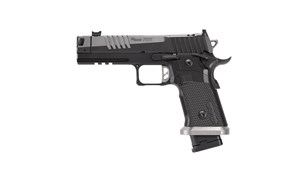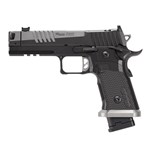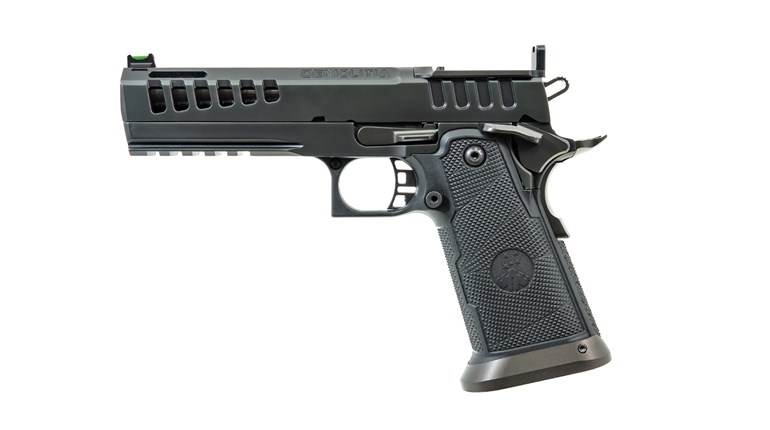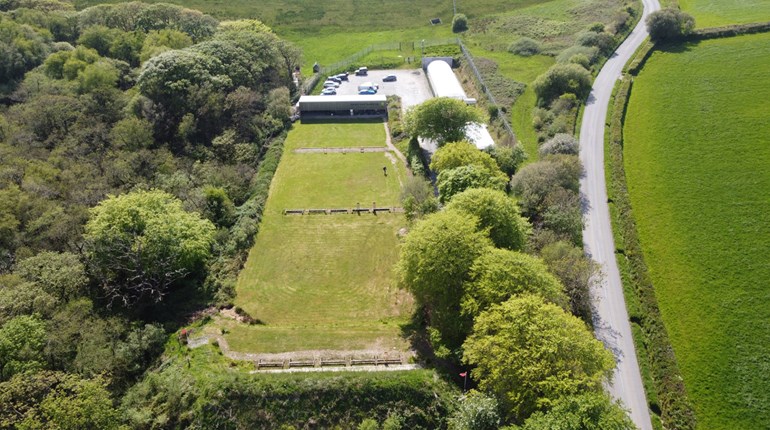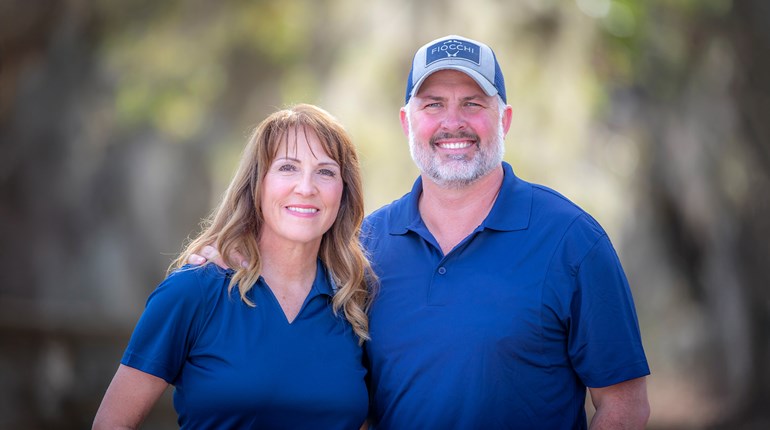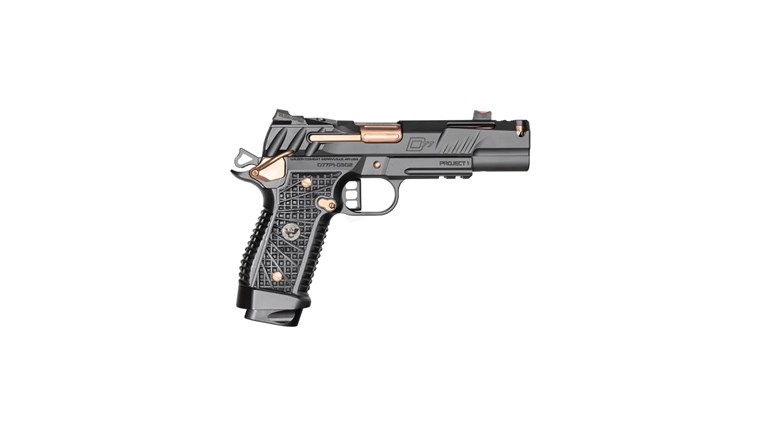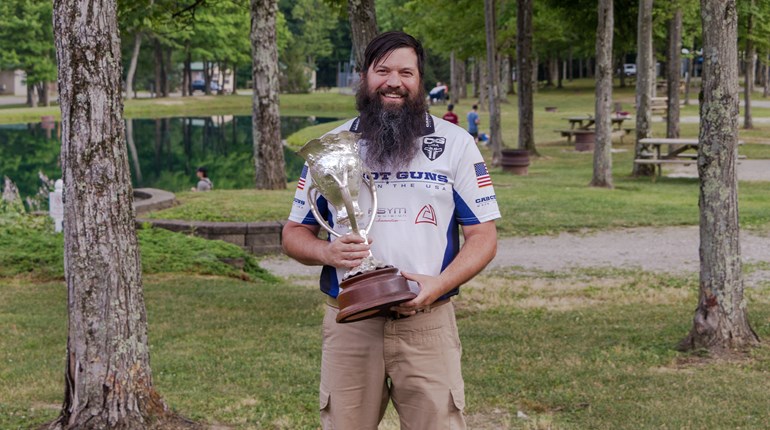
“The National Rifle Association is staging the national smallbore rifle and national pistol championships without cost to the government. We do not have the ranges, the personnel or the funds to stage the most important part of the whole program, the national competitions with service type arms.”
—NRA Executive Director C.B. Lister in the National Board for the Promotion of Rifle Practice statement to Congress on June 23, 1949.
The omission of National Match funds from the Army Appropriation Bill continued in 1949 despite repeated arguments by NRA officials that in its decision, Congress ignored Section 113 of the National Defense Act that stipulated annual funding for the event. In the aftermath, however, the Executive Committee of the National Board for the Promotion of Rifle Practice decided to conduct its National Trophy pistol matches in conjunction with the NRA pistol program and approved a transfer of nominal funds from its general account to provide medals for the events.
At first, the NRA announced that both its national pistol and smallbore championship programs would be held at Camp Dodge, Iowa. But by early summer, a split format was in place whereby the smallbore events were scheduled for Camp Dodge, about 15 miles northwest of Des Moines. (The Camp Dodge National Guard facility just outside of Des Moines, Iowa, site of the 1949 national smallbore championships, was named after Civil War hero Maj. Gen. Grenville Dodge, a railroad magnate who also gave his name to Dodge City, Kansas.)
As for the NRA and National Board for the Promotion of Rifle Practice pistol matches, the competitions were slated for Fort Sheridan, Illinois, located 30 miles north of Chicago on the shore of Lake Michigan. The NRA received help from Army and Marine Corps forces to secure Fort Sheridan through an arrangement that included service personnel to man the ranges, which were capable of handling 400 competitors. At the June meeting of the National Board for the Promotion of Rifle Practice’s Executive Committee, the NRA requested and was granted permission to borrow the knock-down National Match pistol range targets from the Erie Ordnance Depot. The NRA subsequently paid to ship the equipment to and from Fort Sheridan and assumed the cost of all associated repairs and maintenance.
The smallbore matches at Camp Dodge were limited to the range capacity of 250 shooters, and the event marked the first time that a national competition was operated by an NRA civilian club, the Des Moines Rifle and Revolver Club. And while resources were not available for a joint high power program this year, NRA officials were optimistic about a big bore revival in the near future because of the aforementioned role reversal between them and the National Board for the Promotion of Rifle Practice in terms of National Match conduct. A synopsis of the relationship appeared in the 1949 National Pistol Match program and read in part:
“The ‘new look’ so far as the National Matches are concerned is that the arrangements are made on the initiative of the NRA with the co-operation of the Armed Forces and the National Board. In prior years the initiative has laid in the hands of the National Board and the Armed Forces with the NRA in the cooperating role. If this new method of operation becomes the post-war policy it will mean that National Matches can be definitely planned and publicized months earlier than was ever possible when everything hinged on the action of Congress. If the new plan works successfully at Fort Sheridan it will point the way to a renewal of National Matches for Service Rifles in 1950.”
Former NRA President Col. Francis Parker, Jr., (1946-1948) served as Executive Officer for the Fort Sheridan pistol championships, while the duties at Camp Dodge were administered by the Adjutant General of Iowa, Brig. Gen. Charles Grahl, during a smallbore event that produced yet another newcomer to the ranks of national champion. Robert McMains of Dallas, Texas, joined the elite class when he finished atop the standings with a 3189x3200 score amidst windy conditions that hampered 1948 champion Art Cook’s effort to defend as he succumbed to the severe allergic effects of blowing pollen. Conversely, in women’s competition the champion was no stranger—Adelaide McCord continued her consistent ways and secured her fourth title of the decade.
NRA pistol trophy changes this year included the Walker, Clarke and Orton Trophies as awards for the .22, Centerfire and .45 Championships. All were previously awards for single matches of the same name.
The 1949 pistol matchup between Joe Benner and Harry Reeves, the latter encumbered by a ruptured back muscle, still provided the requisite excitement and entertainment that became a trademark of the rivalry. The competition resulted in another title swap, as Benner won the NRA national crown by 13 points. At decade’s end, the title count from the six national pistol championships fired in the 1940s (Reeves with four, Benner with two) proved to be just the mid-point of a classic competition that produced the same number of championships—with a reversal of title counts—in the 1950s.
Marine Sgt. Walter Devine won the National Trophy Individual Pistol Match and was part of a dominant Marine Corps contingent this year that won all three NRA team events and the National Trophy Team Match, while Alice Matthews won the women’s pistol competition to reclaim the title she first won in 1946.
1949 National Matches Fact
This was the first year that the “Mayleigh Cup” was awarded in the international pistol match, where the United States won with a record score. In international smallbore competition, the U.S. Dewar Team also won its postal match in record fashion in 1949.









